Best Buy-to-Let Locations in the UK (2025 Edition): New Areas Revealed
The UK property investment landscape presents a striking contrast between regions, with rental yields ranging from an exceptional 11.2% in Sunderland's SR1 to more modest returns in affluent areas like London's W8 at 2.9%.
Looking ahead through 2025, for property investors choosing their locations and starting sourcing (and buying now), there is exceptionally strong buyer demand and tenant demand across the country. Northern England dominates the best high-yield locations, with Sunderland (SR1), Bradford (BD1), and Leeds (LS3) achieving yields above 8.5%, while offering entry prices as low as £63,081 in SR1 compared to Greater London's average of over £500,000. These northern hotspots also show strong rental demand.
In this article we have analysed the latest property datasets to see which towns and cities across the UK perform the best across key metrics like rental yield, house price growth, price per square foot and population growth, to help identify the best buy-to-let properties and areas for new investors and established landlords growing their portfolio.
We have then shortlisted the highest performing top 3 postcodes with the strongest rental yields in each region to give you a clear idea on which areas are ones to watch.

-
by Robert Jones, Founder of Property Investments UK
With two decades in UK property, Rob has been investing in buy-to-let since 2005, and uses property data to develop tools for property market analysis.
Property Data Sources
Our location guide relies on diverse, authoritative datasets including:
- HM Land Registry UK House Price Index
- Ministry of Housing, Communities and Local Government
- Ordnance Survey Data Hub
- Propertydata.co.uk
We update our property data quarterly to ensure accuracy. Last update: October 2024. Next update: January 2025. All data is presented as provided by our sources without adjustments or amendments.
Best Cities & Towns to Invest in Property in England (2025)
North East England
Sunderland’s SR1 area offers a blend of coastal living and city-centre conveniences, with affordable flats attracting young professionals. Leeds’ LS3 is a vibrant student hub with a strong rental market driven by its proximity to universities, while Newcastle’s NE1 postcode is home to a buzzing nightlife and modern developments around the Quayside, making it one of the city’s most sought-after areas for both renters and investors.
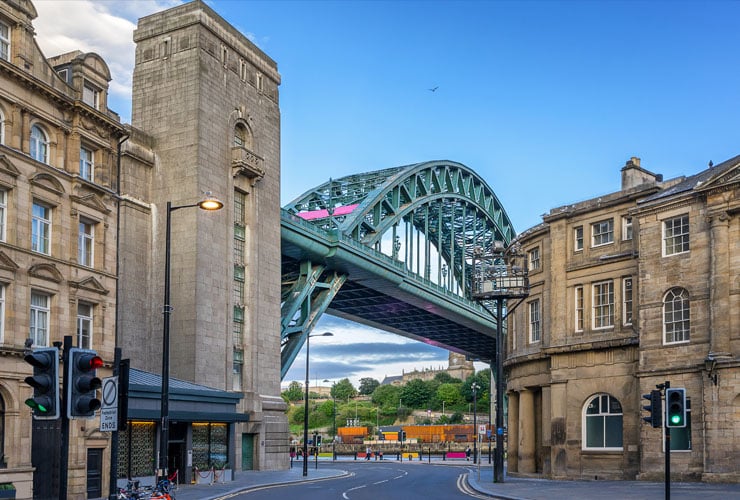
1. Sunderland - SR1 Postcode
Regional Ranking: #1 North East | National Position: #3 Overall
Discover more about Sunderland buy-to-let.
| Housing Market SR1 Postcode | Value |
|---|---|
| Average Gross Rental Yield | 11.2% |
| Average Monthly Rent | £591 |
| Average Property Asking Price | £63,081 |
| Average Price per sq/ft | £84 |
| Current Population | 5,336 |
| Historic 10 Year Population Growth | 1% |
Sunderland Transport Links:
- Rail: Direct services to Newcastle (23 mins), Durham (30 mins) and London Kings Cross (3h 45m)
- Road: Direct access to A19 corridor connecting to Newcastle (30 mins) and Middlesbrough (45 mins)
Sunderland Regeneration Projects:
- Riverside Sunderland masterplan: £100m+ investment creating 1,000 new homes and 10,000 jobs by 2030
- Sunderland Strategic Transport Corridor Phase 3: £40m dual carriageway linking Port of Sunderland to A19
2. Leeds - LS3 Postcode
Regional Ranking: #2 North East | National Position: #5 Overall
Discover more about Leeds buy-to-let.
| Housing Market LS3 Postcode | Value |
|---|---|
| Average Gross Rental Yield | 10.6% |
| Average Monthly Rent | £1,640 |
| Average Property Asking Price | £185,856 |
| Average Price per sq/ft | N/A |
| Current Population | 4,941 |
| Historic 10 Year Population Growth | 8% |
Leeds Transport Links:
- Rail: Direct services to London Kings Cross (2h 13m), Manchester (50m)
- Road: Strategic location with access to M1 and M62 motorways
Leeds Regeneration Projects:
- Leeds Innovation Arc: £450m development creating 3 innovation districts by 2028
- Levelling up Leeds: a plan to deliver up to 20,000 new homes
3. Newcastle - NE1 Postcode
Regional Ranking: #3 North East | National Position: #7 Overall
Discover more about Newcastle buy-to-let.
| Housing Market NE1 Postcode | Value |
|---|---|
| Average Gross Rental Yield | 10.2% |
| Average Monthly Rent | £1,325 |
| Average Property Asking Price | £155,867 |
| Average Price per sq/ft | £231 |
| Current Population | 8,891 |
| Historic 10 Year Population Growth | 9% |
Newcastle Transport Links:
- Rail: Direct services to London Kings Cross (2h 50m), Edinburgh (1h 30m)
- Road: Situated on A167(M), connecting to A1(M) and A19
Newcastle Regeneration Projects:
- Newcastle Helix: £350m innovation quarter. The next stage includes 450 solar-powered homes
- Pilgrim Street Development: £100m scheme delivering grade A offices and retail space by 2025
North West England
Bradford’s BD1 city center is at the heart of a regeneration boom, with new developments and cultural projects boosting the area’s profile. Manchester’s M14, specifically Fallowfield, remains a top choice for student housing, driving consistent rental demand year-round. In Liverpool, L4 covers the famous Anfield area, where recent redevelopment around the football stadium has revitalised the neighbourhood, creating strong investment potential.
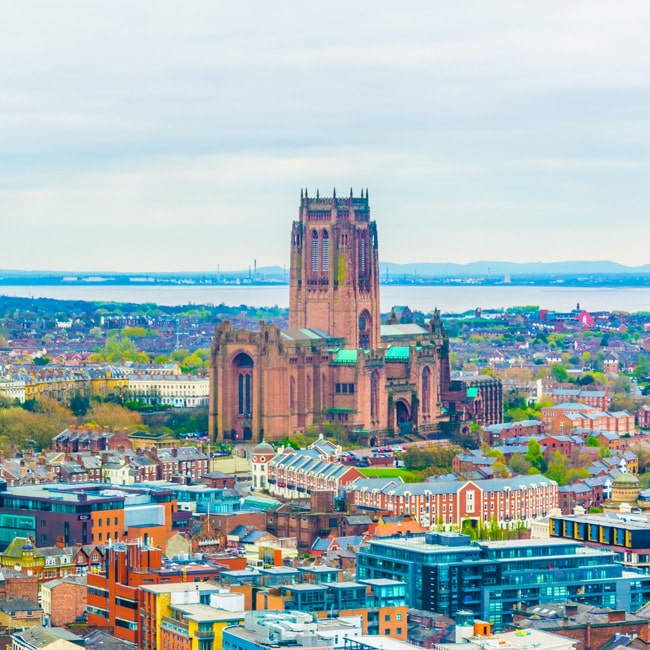
1. Bradford - BD1 Postcode
Regional Ranking: #1 North West | National Position: #1 Overall
Discover more about Bradford buy-to-let.
| Housing Market BD1 Postcode | Value |
|---|---|
| Average Gross Rental Yield | 12.0% |
| Average Monthly Rent | £701 |
| Average Property Asking Price | £67,806 |
| Average Price per sq/ft | £111 |
| Current Population | 3,778 |
| Historic 10 Year Population Growth | 5% |
Bradford Transport Links:
- Rail: Direct services to Leeds (20 mins), Manchester Victoria (1h)
- Road: Quick access to M606 connecting to M62 corridor
Bradford Regeneration Projects:
- Bradford City Village: £200m development creating 1,000 new homes and commercial space
- One City Park: £28m grade A office development creating 450 jobs
2. Manchester - M14 Postcode
Regional Ranking: #2 North West | National Position: #8 Overall
Discover more about Manchester buy-to-let.
| Housing Market M14 Postcode | Value |
|---|---|
| Average Gross Rental Yield | 9.7% |
| Average Monthly Rent | £2,050 |
| Average Property Asking Price | £253,393 |
| Average Price per sq/ft | £280 |
| Current Population | 52,846 |
| Historic 10 Year Population Growth | 12% |
Manchester Transport Links:
- Rail: Multiple stations with services to Manchester Piccadilly (10 mins), Liverpool (1h)
- Road: Easy access to M60 ring road connecting to M56 and M62
Manchester Regeneration Projects:
- Manchester Sister Regeneration: £1.5bn development including new University campus
- Brunswick Area: £110m regeneration project delivering 500 new homes, 860 refurbished homes and new community facilities
3. Liverpool - L4 Postcode
Regional Ranking: #3 North West | National Position: #15 Overall
Discover more about Liverpool buy-to-let.
| Housing Market L4 Postcode | Value |
|---|---|
| Average Gross Rental Yield | 7.7% |
| Average Monthly Rent | £801 |
| Average Property Asking Price | £125,382 |
| Average Price per sq/ft | £135 |
| Current Population | 39,911 |
| Historic 10 Year Population Growth | 7% |
Liverpool Transport Links:
- Rail: Direct access to Liverpool Central (15 mins), Manchester (1h)
- Road: Close proximity to A5058 connecting to M57 and M58
Liverpool Regeneration Projects:
- Liverpool Waters: £5.5bn waterfront transformation delivering 9,000 homes
- Ten Streets Creative District: 2,500 new jobs over 125 acres
Property Data Sources
Our location guide relies on diverse, authoritative datasets including:
- HM Land Registry UK House Price Index
- Ministry of Housing, Communities and Local Government
- Ordnance Survey Data Hub
- Propertydata.co.uk
We update our property data quarterly to ensure accuracy. Last update: October 2024. Next update: January 2025. All data is presented as provided by our sources without adjustments or amendments.
East Midlands
Nottingham’s NG1 city centre offers a thriving business district and a growing demand for high-quality rental properties. Just outside the city, NG7’s Arboretum is popular with students and young professionals due to its proximity to universities and green spaces. Meanwhile, Sheffield’s S3 district is a key area for urban regeneration, offering a mix of modern apartments and historical industrial buildings being transformed into trendy flats.

1. Nottingham - NG1 Postcode
Regional Ranking: #1 East Midlands | National Position: #12 Overall
Discover more about Nottingham buy-to-let.
| Housing Market NG1 Postcode | Value |
|---|---|
| Average Gross Rental Yield | 8.7% |
| Average Monthly Rent | £1,190 |
| Average Property Asking Price | £164,298 |
| Average Price per sq/ft | £254 |
| Current Population | 13,260 |
| Historic 10 Year Population Growth | 7% |
Nottingham Transport Links:
- Rail: Direct services to London St Pancras (1h 45m), Birmingham (1h 15m)
- Road: Direct access to M1 motorway, connecting to Sheffield and London
Nottingham Regeneration Projects:
- Island Quarter: £650m mixed-use development creating 4,000 jobs and 1,600 new homes
- Broad Marsh Area: £250m regeneration project delivering 1000+ new homes, 2,500 new jobes, new retail and leisure spaces
2. Nottingham - NG7 Postcode
Regional Ranking: #2 East Midlands | National Position: #13 Overall
| Housing Market NG7 Postcode | Value |
|---|---|
| Average Gross Rental Yield | 8.7% |
| Average Monthly Rent | £1,636 |
| Average Property Asking Price | £225,606 |
| Average Price per sq/ft | £253 |
| Current Population | 56,139 |
| Historic 10 Year Population Growth | 7% |
Nottingham Transport Links:
- Rail: Access to Nottingham Station (10 mins), direct routes to major cities
- Road: Easy access to A52 and A6200, connecting to M1
Nottingham Regeneration Projects:
- Riverfront Regeneration: 111 new homes delivered across the 250-acre waterside location
- Boots Enterprise Zone: Development creating innovation and business hub for health and well-being businesses and new startups
3. Sheffield - S3 Postcode
Regional Ranking: #3 East Midlands | National Position: #14 Overall
Discover more about Sheffield buy-to-let.
| Housing Market S3 Postcode | Value |
|---|---|
| Average Gross Rental Yield | 8.1% |
| Average Monthly Rent | £813 |
| Average Property Asking Price | £120,401 |
| Average Price per sq/ft | £236 |
| Current Population | 19,185 |
| Historic 10 Year Population Growth | 2% |
Sheffield Transport Links:
- Rail: Sheffield Station (5 mins) with services to London (2h), Manchester (1h)
- Road: Direct access to A61, connecting to M1 motorway
Sheffield Regeneration Projects:
- Heart of the City II: £470m development creating retail, office and residential space
- West Bar Square: £300m mixed-use scheme delivering Grade A offices and 368 build to rent apartments
West Midlands
B44 in Kingstanding offers a more suburban investment opportunity with affordable housing and good transport links into Birmingham city centre. Bordesley Green’s B9 area is undergoing regeneration, making it attractive to investors looking for long-term growth in a well-connected area. Edgbaston’s B15, known for its affluent neighbourhoods and proximity to major universities and hospitals, remains a premium area for property investment.

1. Birmingham - B44 Postcode
Regional Ranking: #1 West Midlands | National Position: #23 Overall
Discover more about Birmingham buy-to-let.
| Housing Market B44 Postcode | Value |
|---|---|
| Average Gross Rental Yield | 6.7% |
| Average Monthly Rent | £1,175 |
| Average Property Asking Price | £211,987 |
| Average Price per sq/ft | £249 |
| Current Population | 37,447 |
| Historic 10 Year Population Growth | 31% |
Birmingham Transport Links:
- Rail: Direct access to Birmingham New Street (15 mins), London (1h 45m)
- Road: Quick access to M6 motorway via A34
Birmingham Regeneration Projects:
- Perry Barr Regeneration: £500m investment including 5,000 new homes
- Sprint Bus Route: Rapid transit system connecting to city centre
2. Birmingham - B9 Postcode
Regional Ranking: #2 West Midlands | National Position: #24 Overall
| Housing Market B9 Postcode | Value |
|---|---|
| Average Gross Rental Yield | 6.6% |
| Average Monthly Rent | £1,152 |
| Average Property Asking Price | £208,112 |
| Average Price per sq/ft | £224 |
| Current Population | 24,919 |
| Historic 10 Year Population Growth | 25% |
3. Birmingham - B15 Postcode
Regional Ranking: #3 West Midlands | National Position: #25 Overall
| Housing Market B15 Postcode | Value |
|---|---|
| Average Gross Rental Yield | 6.5% |
| Average Monthly Rent | £1,295 |
| Average Property Asking Price | £240,393 |
| Average Price per sq/ft | £335 |
| Current Population | 17,468 |
| Historic 10 Year Population Growth | 15% |
Property Data Sources
Our location guide relies on diverse, authoritative datasets including:
- HM Land Registry UK House Price Index
- Ministry of Housing, Communities and Local Government
- Ordnance Survey Data Hub
- Propertydata.co.uk
We update our property data quarterly to ensure accuracy. Last update: October 2024. Next update: January 2025. All data is presented as provided by our sources without adjustments or amendments.
South East
SO14 in Southampton is a bustling area near the city’s waterfront, with its proximity to the port and cultural hubs driving strong rental demand. Oxford’s OX4 covers areas like Cowley and Iffley, known for their diverse communities and growing interest from investors seeking properties for students and academics. Milton Keynes’ MK9 is a modern hub with high-growth potential, thanks to its excellent transport links and booming commercial developments.
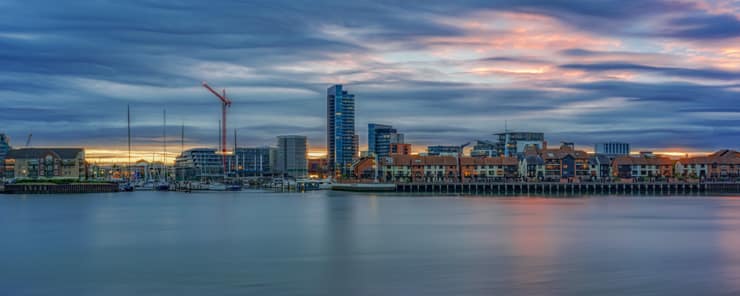
1. Southampton - SO14 Postcode
Regional Ranking: #1 South East | National Position: #19 Overall
Discover more about Southampton buy-to-let.
| Housing Market SO14 Postcode | Value |
|---|---|
| Average Gross Rental Yield | 7.2% |
| Average Monthly Rent | £1,264 |
| Average Property Asking Price | £211,427 |
| Average Price per sq/ft | £297 |
| Current Population | 27,223 |
| Historic 10 Year Population Growth | 6% |
Southampton Transport Links:
- Rail: Southampton Central (5 mins) with direct services to London Waterloo (1h 20m)
- Road: Direct access to M27 and M3 motorways
Southampton Regeneration Projects:
- Mayflower Quarter: £1bn masterplan delivering mixed-use development
- Bargate Quarter: £132m investment creating 529 new homes
2. Oxford - OX4 Postcode
Regional Ranking: #2 South East | National Position: #21 Overall
Discover more about Oxford buy-to-let.
| Housing Market OX4 Postcode | Value |
|---|---|
| Average Gross Rental Yield | 6.9% |
| Average Monthly Rent | £2,586 |
| Average Property Asking Price | £448,276 |
| Average Price per sq/ft | £482 |
| Current Population | 61,985 |
| Historic 10 Year Population Growth | 7% |
Oxford Transport Links:
- Rail: Oxford Station nearby with services to London Paddington (1h)
- Road: Easy access to A4142 Eastern Bypass linking to M40
Oxford Regeneration Projects:
- Oxford North: £700m innovation district creating 4,500 jobs and 480 new homes
- Oxpens: Mixed-use development delivering 450 homes and 3,000 jobs
3. Milton Keynes - MK9 Postcode
Regional Ranking: #3 South East | National Position: #22 Overall
Discover more about Milton Keynes buy-to-let.
| Housing Market MK9 Postcode | Value |
|---|---|
| Average Gross Rental Yield | 6.8% |
| Average Monthly Rent | £1,392 |
| Average Property Asking Price | £244,276 |
| Average Price per sq/ft | £363 |
| Current Population | 3,386 |
| Historic 10 Year Population Growth | 15% |
Milton Keynes Transport Links:
- Rail: Milton Keynes Central with fast services to London Euston (35m)
- Road: Strategic location between M1 and A5
Milton Keynes Regeneration Projects:
- Lakes Estate: Creating 183 new homes and new community facilities
South West
Exeter’s EX4 area, with its mix of historic architecture and modern student accommodation, continues to attract buy-to-let investors. Bournemouth’s BH9 is popular with families and students alike, offering a quieter lifestyle with easy access to the beach and city center. Bristol’s BS34, located near the city’s business parks and the University of the West of England, is a prime spot for investors targeting professionals and students.
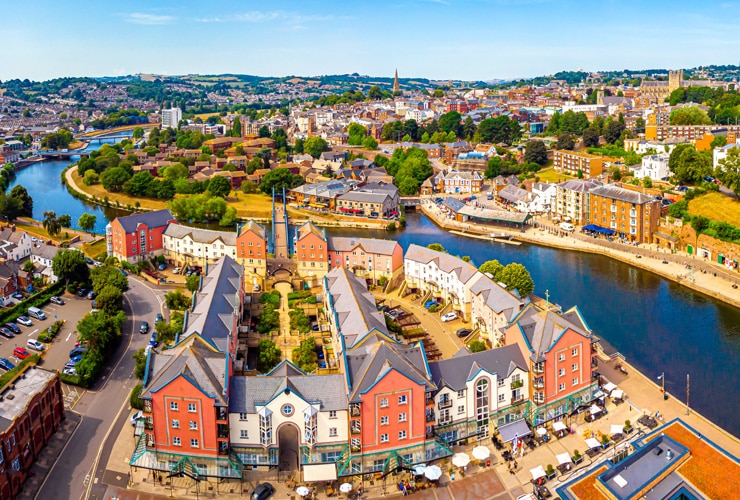
1. Exeter - EX4 Postcode
Regional Ranking: #1 South West | National Position: #17 Overall
Discover more about Exeter buy-to-let.
| Housing Market EX4 Postcode | Value |
|---|---|
| Average Gross Rental Yield | 7.4% |
| Average Monthly Rent | £1,996 |
| Average Property Asking Price | £322,621 |
| Average Price per sq/ft | £344 |
| Current Population | 55,242 |
| Historic 10 Year Population Growth | 14% |
Exeter Transport Links:
- Rail: Exeter St Davids to London Paddington (2h 10m)
- Road: Direct access to M5 motorway and A30
Regeneration Projects:
- The Exeter Plan: Developed to create 12,000 new homes across new neighbourhoods
2. Bournemouth - BH9 Postcode
Regional Ranking: #2 South West | National Position: #20 Overall
Discover more about Bournemouth buy-to-let.
| Housing Market BH9 Postcode | Value |
|---|---|
| Average Gross Rental Yield | 7.0% |
| Average Monthly Rent | £2,198 |
| Average Property Asking Price | £374,351 |
| Average Price per sq/ft | £369 |
| Current Population | 30,988 |
| Historic 10 Year Population Growth | 5% |
Bournemouth Transport Links:
- Rail: Direct services to London Waterloo (1h 55m)
- Road: Easy access to A338 connecting to A31 and M27
Bournemouth Regeneration Projects:
- Town investment plan: £23 million Boscombe-Bournemouth regeneration plan.
- Bournemouth University: £53 million new university buildings with an excellent BREEAM standard
3. Bristol - BS34 Postcode
Regional Ranking: #3 South West | National Position: #21 Overall
Discover more about Bristol buy-to-let.
| Housing Market BS34 Postcode | Value |
|---|---|
| Average Gross Rental Yield | 6.9% |
| Average Monthly Rent | £2,042 |
| Average Property Asking Price | £352,722 |
| Average Price per sq/ft | £398 |
| Current Population | 29,893 |
| Historic 10 Year Population Growth | 11% |
Bristol Transport Links:
- Rail: Bristol Parkway to London Paddington (1h 30m)
- Road: Direct access to M4 and M5 motorway junction
Bristol Regeneration Projects:
- Filton Airfield: Massive expansion to the original £1.5bn development, now to deliver 6,500 homes
- Brabazon Arena: New outdoor arena development, expanding on the former brabazon hangers development
Greater London
RM19 in Rainham, positioned on the Thames Estuary, is benefiting from ongoing regeneration projects and improved transport links, making it increasingly popular with first-time buyers. IG11 in Barking continues to be a focal point of large-scale regeneration, combining affordable prices with a growing arts and creative scene. RM10 in Dagenham is another area of transformation, attracting investors with its new housing developments and strong commuter connections into Central London.
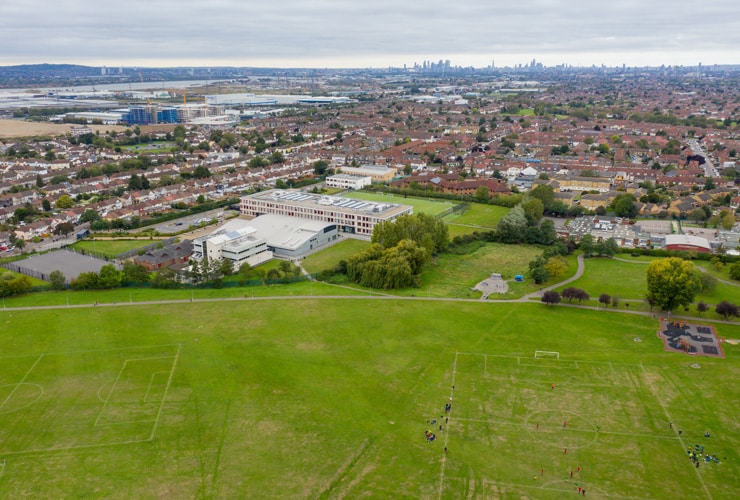
1. Purfleet - RM19 Postcode
Regional Ranking: #1 Greater London | National Position: #17 Overall
Discover more about East London buy-to-let.
| Housing Market RM19 Postcode | Value |
|---|---|
| Average Gross Rental Yield | 7.4% |
| Average Monthly Rent | £1,443 |
| Average Property Asking Price | £233,210 |
| Average Price per sq/ft | £366 |
| Current Population | 6,508 |
| Historic 10 Year Population Growth | 11% |
Purfleet Transport Links:
- Rail: Purfleet Station to London Fenchurch Street (30m)
- Road: Direct access to A13, connecting to M25
Purfleet Regeneration Projects:
- Purfleet Centre: £1bn regeneration creating 2,850 homes and creative hub
- Thames Enterprise Park: £300m development, transforming 412 acres creating 5,500 jobs
2. Barking - IG11 Postcode
Regional Ranking: #2 Greater London | National Position: #23 Overall
Discover more about Barking buy-to-let.
| Housing Market IG11 Postcode | Value |
|---|---|
| Average Gross Rental Yield | 6.7% |
| Average Monthly Rent | £1,823 |
| Average Property Asking Price | £326,028 |
| Average Price per sq/ft | £448 |
| Current Population | 50,081 |
| Historic 10 Year Population Growth | 15% |
Barking Transport Links:
- Rail: Multiple stations with services to London Fenchurch Street (15m)
- Road: Quick access to A13 and North Circular (A406)
Barking Regeneration Projects:
- Barking Riverside: £3.5bn development delivering 10,000+ new homes
- Fresh Wharf: £250m waterfront development creating 911 homes
3. Dagenham - RM10 Postcode
Regional Ranking: #3 Greater London | National Position: #24 Overall
| Housing Market RM10 Postcode | Value |
|---|---|
| Average Gross Rental Yield | 6.7% |
| Average Monthly Rent | £1,993 |
| Average Property Asking Price | £358,198 |
| Average Price per sq/ft | £455 |
| Current Population | 37,775 |
| Historic 10 Year Population Growth | 15% |
Dagenham Transport Links:
- Rail: Dagenham East Underground (District Line) to central London
- Road: Direct access to A13, connecting to M25
Dagenham Regeneration Projects:
- Beam Park: £1bn development creating 3,000 new homes
- Dagenham Film Studios: £300m investment creating 1,200 jobs
Wales
Ferndale’s CF43 in the Rhondda Valley offers affordable property prices and strong potential for growth as nearby towns benefit from regeneration projects. Cardiff’s CF24 is a lively student and professional area close to the city center, making it a prime spot for rental investments. CF10 in Cardiff Bay blends waterfront living with modern apartments, attracting young professionals and offering solid yields for buy-to-let investors.
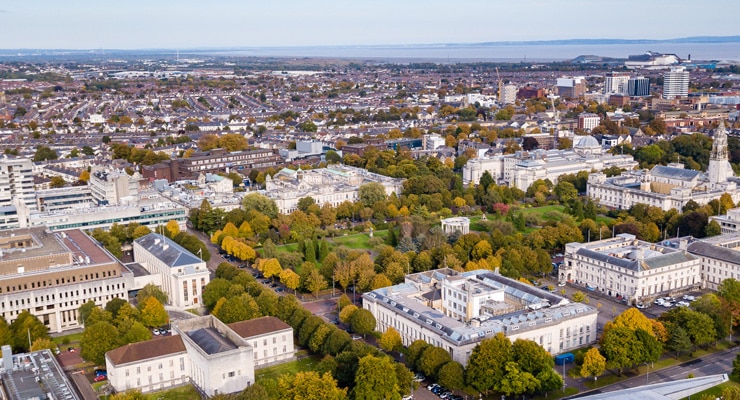
1. Ferndale - CF43 Postcode
Regional Ranking: #1 Wales | National Position: #13 Overall
| Housing Market CF43 Postcode | Value |
|---|---|
| Average Gross Rental Yield | 8.3% |
| Average Monthly Rent | £706 |
| Average Property Asking Price | £101,728 |
| Average Price per sq/ft | £132 |
| Current Population | 11,884 |
| Historic 10 Year Population Growth | 50% |
Ferndale Transport Links:
- Rail: Ferndale to Cardiff Central (1h)
- Road: Access to A4233 connecting to M4 corridor
Ferndale Regeneration Projects:
- Rhondda Valleys Regeneration: £25m investment in local infrastructure
2. Cardiff - CF24 Postcode
Regional Ranking: #2 Wales | National Position: #14 Overall
Discover more about Cardiff buy-to-let.
| Housing Market CF24 Postcode | Value |
|---|---|
| Average Gross Rental Yield | 8.2% |
| Average Monthly Rent | £1,713 |
| Average Property Asking Price | £251,306 |
| Average Price per sq/ft | £278 |
| Current Population | 54,645 |
| Historic 10 Year Population Growth | 7% |
Cardiff Transport Links:
- Rail: Cardiff Queen Street to Cardiff Central (5m)
- Road: Easy access to A4161 and A470
Cardiff Regeneration Projects:
- Multiple housing projects: Cardiff council housing regeneration
- Capital Quarter: £150m mixed-use development with office and student purpose built accomodation
3. Cardiff - CF10 Postcode
Regional Ranking: #3 Wales | National Position: #16 Overall
| Housing Market CF10 Postcode | Value |
|---|---|
| Average Gross Rental Yield | 7.8% |
| Average Monthly Rent | £1,232 |
| Average Property Asking Price | £189,195 |
| Average Price per sq/ft | £273 |
| Current Population | 16,011 |
| Historic 10 Year Population Growth | 7% |
Scotland
Glasgow’s G52 area, including parts of Cardonald, offers affordable suburban housing with easy access to the city center. Cumbernauld’s G67 provides affordable investment opportunities in a town known for its modernist architecture and planned community layout. Glasgow’s G4 city center is one of the hottest areas for property investment, with its vibrant cultural scene and proximity to universities driving strong demand for rental properties.

1. Glasgow - G52 Postcode
Regional Ranking: #1 Scotland | National Position: #6 Overall
| Housing Market G52 Postcode | Value |
|---|---|
| Average Gross Rental Yield | 10.1% |
| Average Monthly Rent | £942 |
| Average Property Asking Price | £111,939 |
| Average Price per sq/ft | £138 |
| Current Population | 29,061 |
| Historic 10 Year Population Growth | 31% |
Glasgow Transport Links:
- Rail: Cardonald Station to Glasgow Central (12m)
- Road: Close proximity to M8 motorway
Glasgow Regeneration Projects:
- Cardonald Area Development: £37.5m investment in greenspace
- Glasgow Airport Investment Area: £39.1m project creating innovation district
2. Cumbernauld - G67 Postcode
Regional Ranking: #2 Scotland | National Position: #11 Overall
| Housing Market G67 Postcode | Value |
|---|---|
| Average Gross Rental Yield | 8.7% |
| Average Monthly Rent | £753 |
| Average Property Asking Price | £104,106 |
| Average Price per sq/ft | £121 |
| Current Population | 34,392 |
| Historic 10 Year Population Growth | 21% |
Cumbernauld Transport Links:
- Rail: Cumbernauld Station to Glasgow Queen Street (25m)
- Road: Direct access to M80 motorway
Cumbernauld Regeneration Projects:
- Town Centre Regeneration: £9.2m transformation of Cumbernauld town centre
3. Glasgow - G4 Postcode
Regional Ranking: #3 Scotland | National Position: #12 Overall
| Housing Market G4 Postcode | Value |
|---|---|
| Average Gross Rental Yield | 8.6% |
| Average Monthly Rent | £1,242 |
| Average Property Asking Price | £173,617 |
| Average Price per sq/ft | £233 |
| Current Population | 12,976 |
| Historic 10 Year Population Growth | 5% |
Conclusion
The UK's buy-to-let landscape in 2025 presents stark investment contrasts, from Bradford's BD1 offering the nation's highest yield at 12.0% with an entry price of £67,806 (£111 per sq ft), to Oxford's OX4 commanding £448,276 (£482 per sq ft) while still delivering 6.9% yields. The data reveals surprising opportunities in major cities, with Nottingham's NG1 achieving 8.7% yields despite higher prices per sq ft (£254) than Liverpool's L4 (£135 per sq ft), while London's best performer, Purfleet RM19, delivers 7.4% yields at £366 per sq ft. These figures demonstrate that highest prices don't always mean lowest yields, nor do lowest prices guarantee the best returns.
Whether you're looking to invest in these high-performing areas or maximise returns on your existing portfolio (if you are considering the best time to achieve a fast property sale in a competitive market), these figures demonstrate that highest prices don't always mean lowest yields, nor do lowest prices guarantee the best returns.
